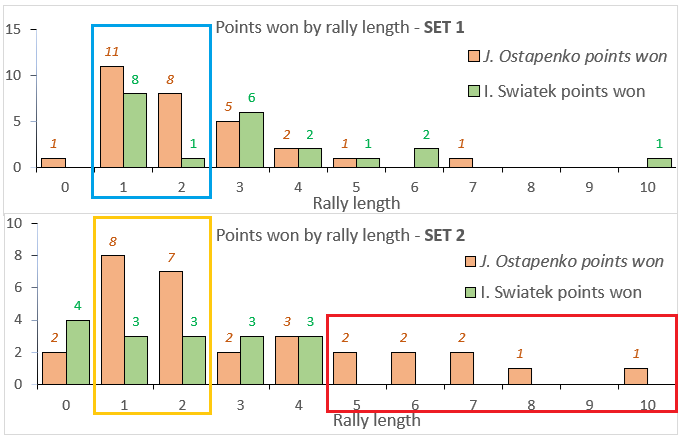WTA1000 Doha: Jelena Ostapenko vs Iga Swiatek semi-final analysis
Ostapenko extended her mastery over Swiatek to 5 wins out of 5 with all-out-attack returning and a couple of serve locations that Swiatek couldn't solve
cover 📸 source: WTA Tour
At the end of the first set, nobody would have guessed that Iga Swiatek held a slim 1-point advantage from 25 rallies played (13 to 12).
Because her confidence had already been shattered by Ostapenko’s all-out-attack returning and her own return struggles.
The Latvian was enjoying the unique challenge of extending her record against Swiatek to 5 wins in 5 matches. She hit winners with incredible ease (24, against 7 by Swiatek), played relaxed from start to finish and put on a smile from time to time.
Swiatek meanwhile, already hurting from the scar tissue accumulated in previous defeats to Ostapenko, was totally rattled once she lost the first set. Above all, she had no solutions!
The Doha triple champion was so frustrated and out-of-sorts that she was outrallied in the 8 longest points of the second set (marked by red box, below).
So the second set was a lot more one-sided — Ostapenko jumped to a 4-0 lead before serving Swiatek a bagel — because the unseeded Latvian added this superiority in 5+shot rallies to her supremacy in serve and return performances she carried from the first set.
Ostapenko had taken the opener by building a combined 19-9 score in points lasting 1 or 2 shots** (blue box above). Decisively, this was a 10-point difference that even exceeded by 2 points her winning margin at the end of the set (29-21).
** A 1-shot point means the serve was the last valid shot on court while a 2-shot point means the last valid shot on court was the return
While breezing through the second set, Ostapenko repeated such serve & return dominance, translating it into a healthy 9-point gap that was created by her 15-6 edge in 1- and 2-shot points (yellow box above).
Now let’s take a deeper dive to pinpoint key moments of the match and discuss how Ostapenko assembled her massive 19-point advantage (34-15) in points lasting 1 or 2 shots.
First, here is a look at Ostapenko’s blistering start.





